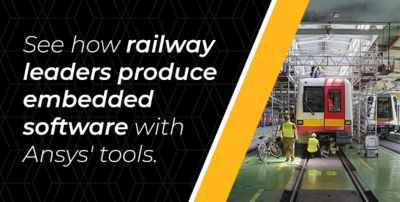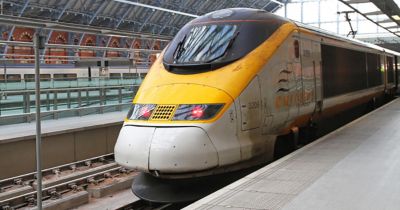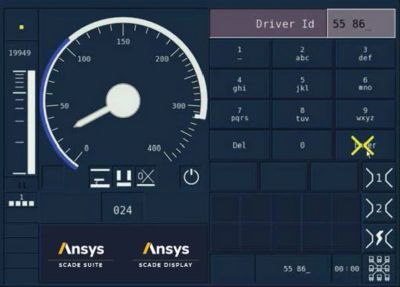-
-
学生向け無料ソフトウェアにアクセス
Ansysは次世代の技術者を支援します
学生は、世界クラスのシミュレーションソフトウェアに無料でアクセスできます。
-
今すぐAnsysに接続!
未来をデザインする
Ansysに接続して、シミュレーションが次のブレークスルーにどのように貢献できるかを確認してください。
国および地域
無料トライアル
製品およびサービス
リソースとトレーニング
当社について
Back
製品およびサービス
ANSYS BLOG
February 26, 2021
Digital Technologies Move the Railway Industry Forward
The global railway industry is experiencing incredible growth. Statista estimates that the European railway market will grow from $16 billion in 2020 to nearly $29 billion by 2025 — an annual growth rate of 12%.1 Railway engineering teams face the difficult task of balancing growth and product innovation with an unswerving commitment to passenger safety.

As consumers look for environmentally responsible transportation alternatives, rail tracks are becoming more densely populated with traffic. For trains to make gains in speed and energy performance, rail manufacturers must ensure their designs operate with an incredible degree of precision.
At the same time, railway engineers are also challenged to capitalize on the new opportunities created by digitalization, autonomy and cross-border standardization that will open longer routes.
Find out why the world’s railway leaders are already relying on Ansys to produce embedded software that meets the highest certification standards for safety, while also supporting profitability and market leadership. Download the case study.
Virtually every rail manufacturer today is racing to market with revolutionary new solutions in key areas to support the growth of the railway industry by optimizing control and maximizing safety, even as traffic increases. Let’s look at some of the key technology growth areas.

Automatic Communications-Based Train Control (CBTC) and Protection Systems
Increasingly, railway control and protection systems feature some level of autonomy — including fully driverless operation. Because CBTC systems use real-time data to manage traffic and infrastructure capacity, they are critical to supporting industry growth and increased density on the tracks.
Automatic train protection (ATP) and automatic train operation (ATO) technologies monitor the train’s position and speed in real time, autonomously activating emergency braking and other functions as needed to ensure safe operation, and to maintain schedules and timetables.
Driver-Machine Interfaces
As trains become more digital in nature, featuring autonomous functionality and a wealth of embedded software, new interfaces and displays are needed to provide real-time data to human operators. Intelligent interfaces can simulate expected track or train conditions, then help drivers choose the best course of action.
Interlocking Solutions
The railway industry has long relied on interlocking systems to keep stations and platforms safe by signaling to individual trains as they approach and leave. Today’s interlocking solutions are more sophisticated and automated in nature, connecting multiple trains with the overall railway environment to avoid collisions and other unexpected events.
As rail traffic grows, interlocking systems are a core capability for managing complex traffic patterns. Wireless communication and data-processing capabilities help interlocking systems monitor and control safety conditions in real time.
Mechatronic Control Systems
Today’s trains rely heavily on electronics and software — but equally important are the mechanical systems that enable functions like traction and braking. Mechatronic control systems bring these two capabilities together, allowing the digital management and activation of the train’s essential mechanical systems, often autonomously. This requires continuous monitoring, connectivity among multiple systems and data-based decision making.
Overcoming the Embedded Software Challenge
Underlying each one of these technological capabilities are millions of lines of embedded software code that manage, monitor and control their functionality, as well as their interaction with other electronics both inside and outside the train.

Because of the high level of risk associated with train controls and the digital complexity of modern trains, embedded software design and validation represent one of the more time-consuming and expensive activities in railway product development.
To help railway engineers meet embedded software challenges, Ansys SCADE solutions provide a model-based environment for defining embedded software architectures and behavior, verifying functional performance and automatically generating the code that executes that functionality, flawlessly.
Ansys enables rail manufacturers to balance uncompromising safety with the short development times and low engineering costs required to launch innovations and secure a competitive edge.
If you want to learn more about this topic, check out our white paper: Full Steam Ahead: Ansys SCADE Speeds Embedded Software Development for Railway Applications.
Join us for our Rail Industry Webinar series to learn how the leading rail companies use simulation to drive innovation and enter the market with new technologies.